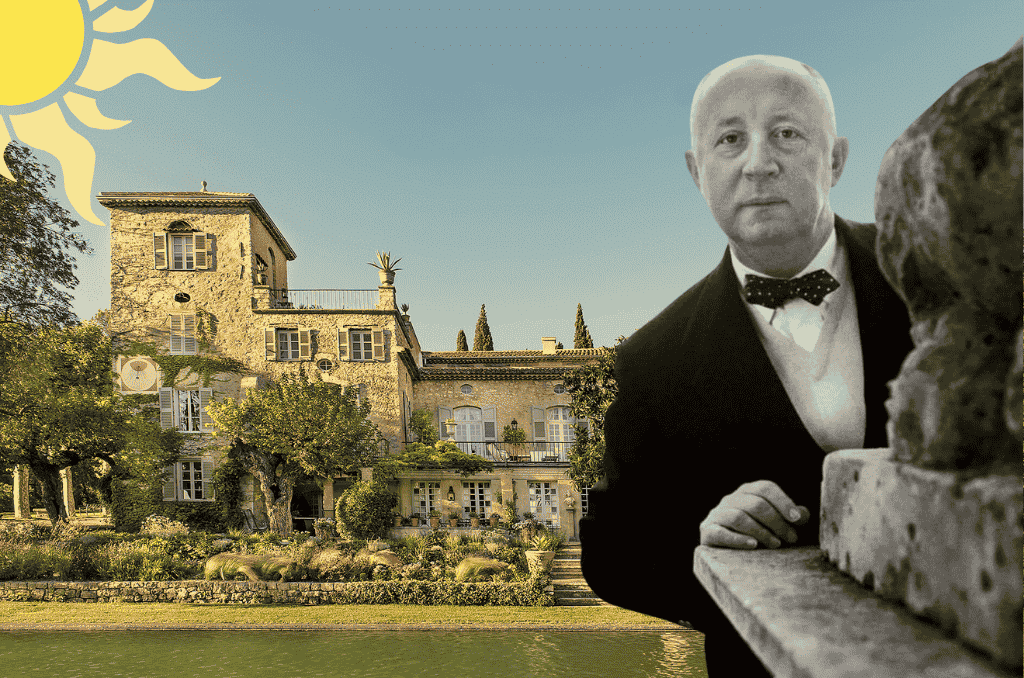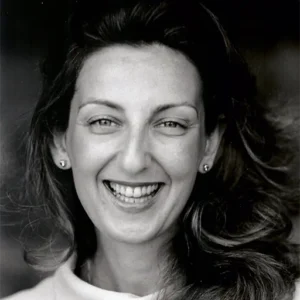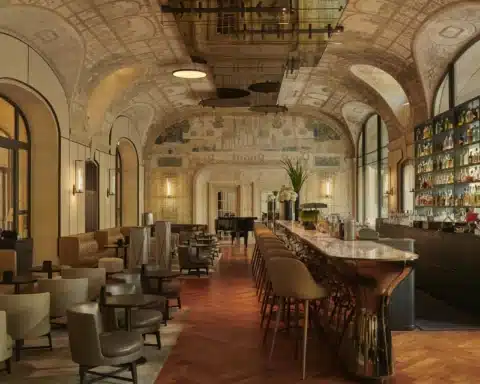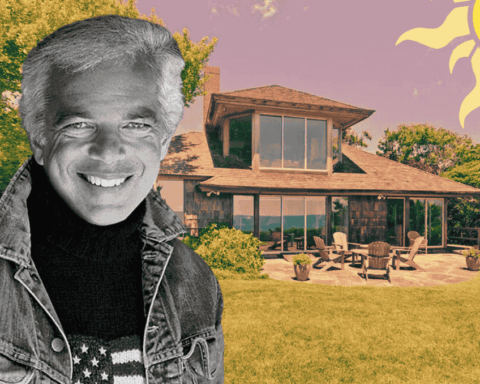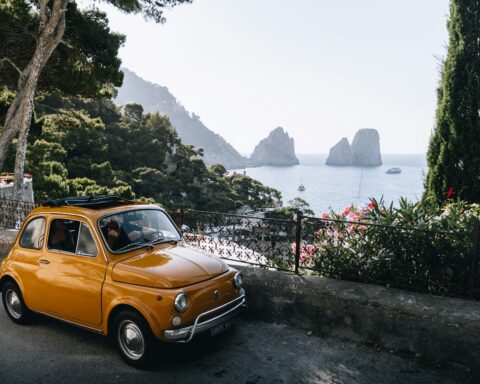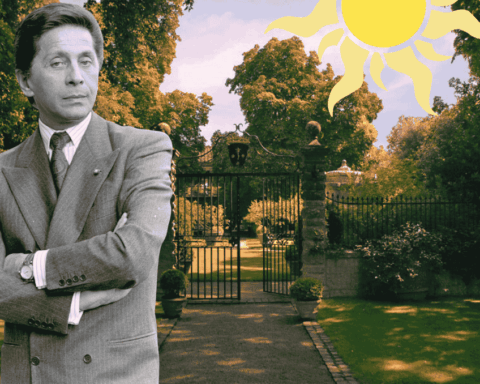From Miami to Tangier, via the French Riviera, Cascais and the Hamptons, the biggest names in fashion have found summer retreats far from the catwalks and spotlights where they can express their creative genius.
Legendary villas, family homes, secret workshops, and castles—each of these exceptional places embodies the spirit, audacity, and art of living of their famous owners. This summer, LUXUS MAGAZINE takes you on a weekly tour of a prestigious residence: a journey in nine episodes through the iconic vacation spots of the world’s greatest fashion designers.
Our journey continues at the Château de la Colle Noire in Montauroux in the Var region, the Provençal retreat surrounded by fragrant gardens of Christian Dior.
In the glittering world of Haute Couture, where spotlights illuminate Parisian salons and needles work tirelessly in the workshops of Avenue Montaigne, few places offer Christian Dior a real respite. La Colle Noire, discreetly nestled in the hills of the Var, in the fragrant heart of the Pays de Fayence, was his precious refuge, far from the hustle and bustle of fashion.
Acquired in 1950, this rural property with its raw elegance became much more than a simple vacation home. It was a sanctuary, an intimate mirror of his soul, a silent manifesto of his art of living. In this stone haven, bathed in light and nature, Dior aspired to rediscover simplicity and the essential beauty of real things. This place, he wrote, was where he could finally live peacefully, “forgetting Christian Dior to simply become Christian again.”
A Provence of childhood and rebirth
Christian Dior, born in Normandy, became almost naturally Provençal at heart. The story began in pain in the 1930s. Dior, then a young man, discovered Provence, an unexpected paradise in the midst of a descent into hell. His mother Madeleine had died the previous year, just before his father Maurice went bankrupt, ruined by the aftermath of the 1929 stock market crash. The fertilizer company boss could no longer finance his son’s art gallery in Paris. He couldn’t even save the family home in Granville, the splendid villa Les Rhumbs, with its view of the English Channel. It was heartbreaking. “The house of my childhood… I have the fondest and most wonderful memories of it,” wrote the couturier. “What am I saying? My life, my style, owe almost everything to its location and architecture.”
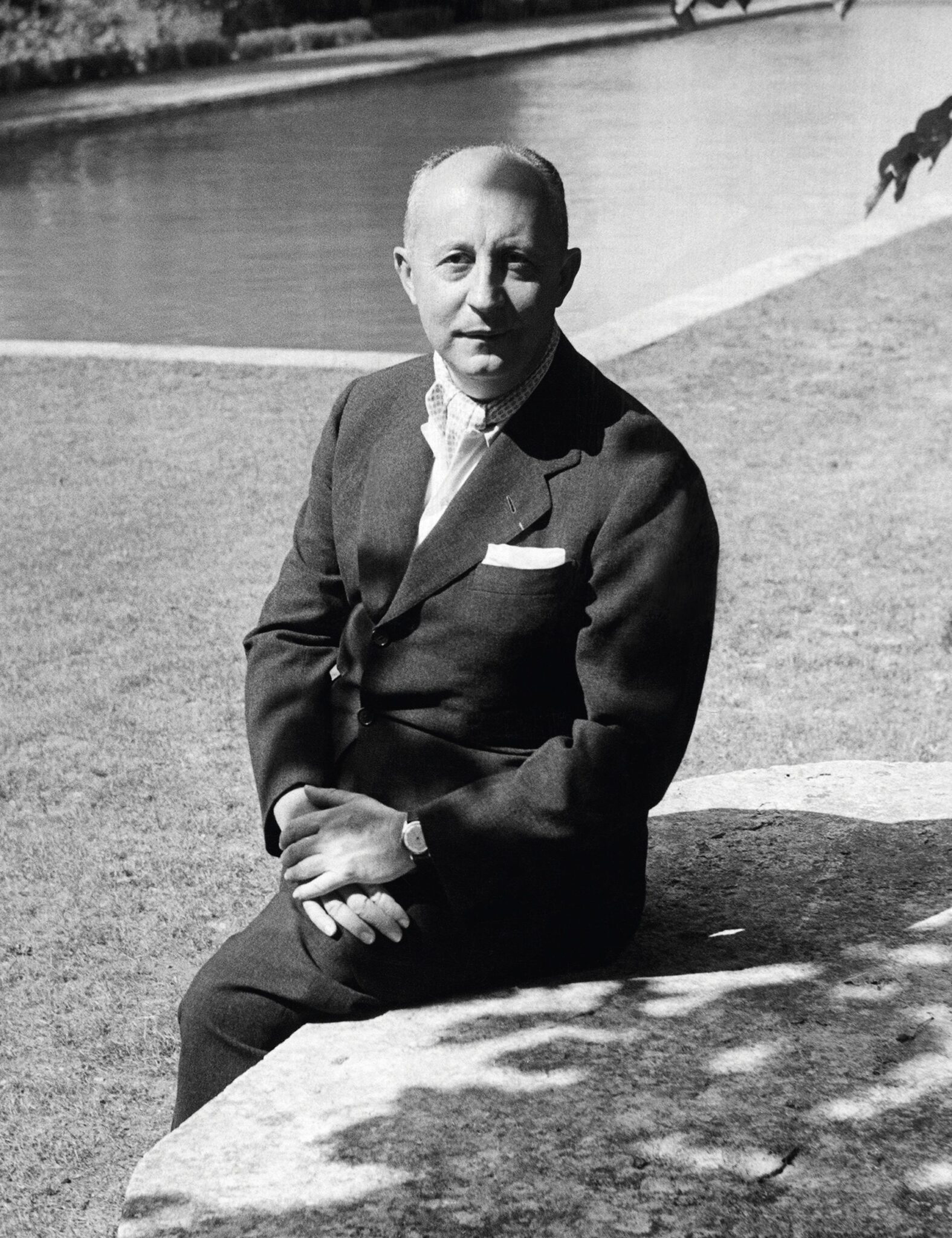
In exile in the Var, a more modest region, almost penniless, the Diors settled in a small farm surrounded by fragrant flowers through the efforts of their loyal housekeeper Marthe Lefebvre. In the modest farmhouse in Callian, his beloved sister Catherine took up rose growing, and Christian discovered his “peasant heart.” A fashion illustrator in Paris, he enjoyed every moment he spent back on the land. Demobilized in 1940, he finally settled in Callian where, in another heartbreaking turn of events, the family had to uproot their precious rose bushes to plant peas and beans to sell at the market. It was a difficult period, but one that left a lasting impression on him. He spoke fondly of his attachment to the South, describing it as a vital part of his roots.
Several years passed.
Dior was then at the height of his fame thanks to his fashion and perfume houses, founded in 1946 and 1947 respectively, buoyed by the global success of the New Look and the Miss Dior perfume. Named by Carmel Snow, the famous editor-in-chief of Harper’s Bazaar, at the very first Dior fashion show, this new aesthetic of the New Look celebrated an ultra-feminine silhouette with rounded shoulders, a slim waist, and a generously flared skirt below the belt. Christian Dior then learned from his sister Catherine that the Château de la Colle Noire was for sale. He saw the estate as an opportunity to reconnect with a region that embodied light, simplicity, and inspiration for him. He purchased it in 1950.
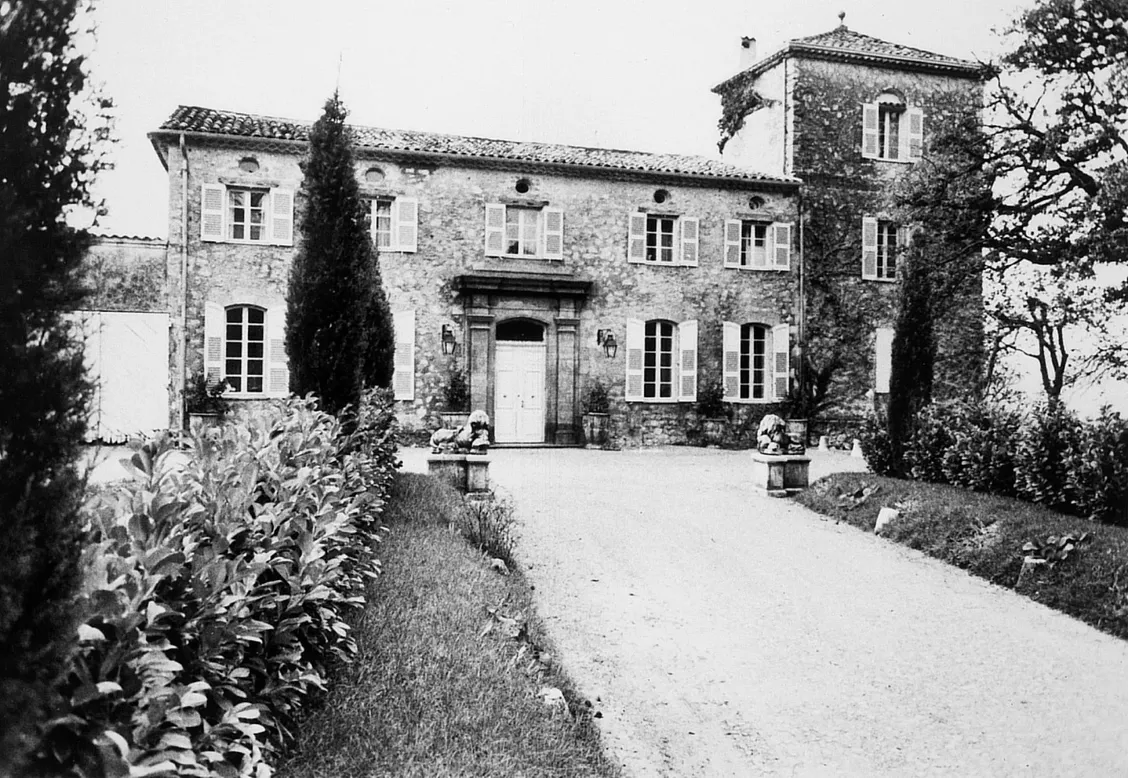
He already had a second home in Milly-La-Forêt, the Moulin de Coudret, but it was too close to Paris and did not offer him the change of scenery he longed for. He therefore chose this 50-hectare estate overlooking the plain of Montauroux, a tiny hamlet of 30 inhabitants. The building was not grand, but it spoke to him. He envisaged a peaceful future there, far from his worldly twin, whom he called “the Other,” and simply becoming Christian again. Built between 1858 and 1861 on a promontory overlooking the plains of Montauroux, the Château de la Colle Noire takes its name from the scrubby hills that surround it. Before Dior, the estate passed through the hands of several owners, including Henri-Emmanuel Poulle, a local notable who turned it into a large agricultural estate. Protected from the ravages of the French Revolution, the château retained its architectural integrity and rustic charm, qualities that appealed to Dior.
A project of heart and stone
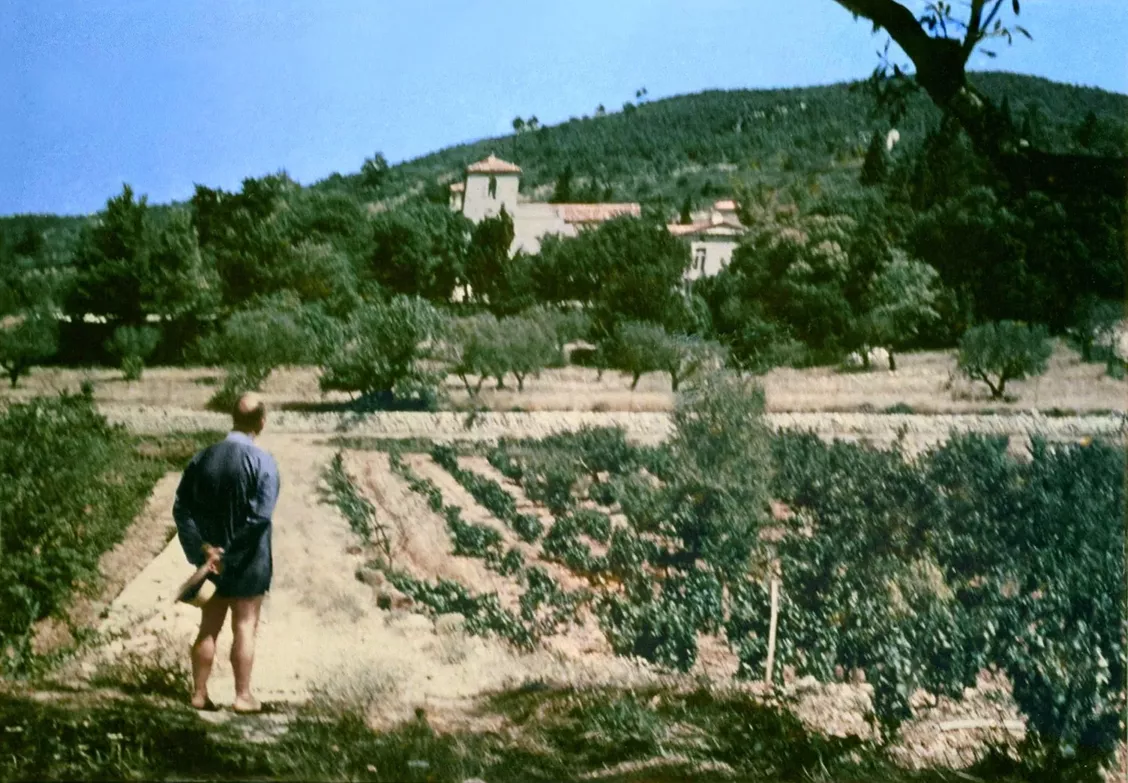
In his autobiography, Christian Dior et moi (1957), Dior confessed that architecture had been his “true passion” since childhood, comparing his couture creations to “ephemeral architecture” that glorified the female body. This sensibility is fully evident in the restoration of the Château de la Colle Noire. Dior did not simply renovate it: he transformed it, with the help of Russian-French architect André Svetchine. Renowned for his Mediterranean villas, Svetchine brought the couturier’s vision to life: an elegant, rooted, luminous country house.
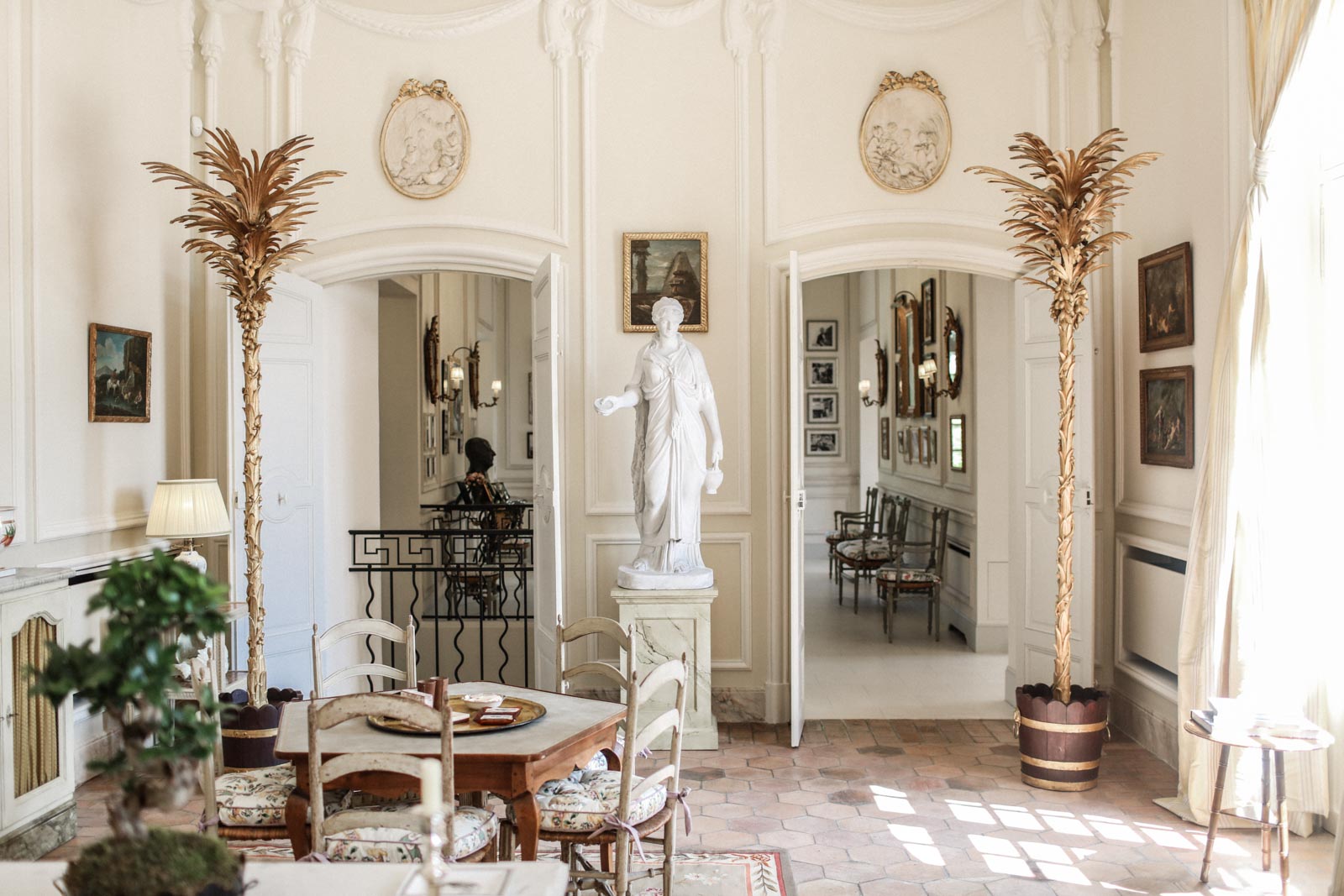
The stone was left exposed, the spaces enlarged, and the gardens reorganized like a living painting. The hexagonal atrium features a compass rose designed by Dior, a nod to his superstition and his memories of Normandy. The château became an intimate theater for his sensibility.
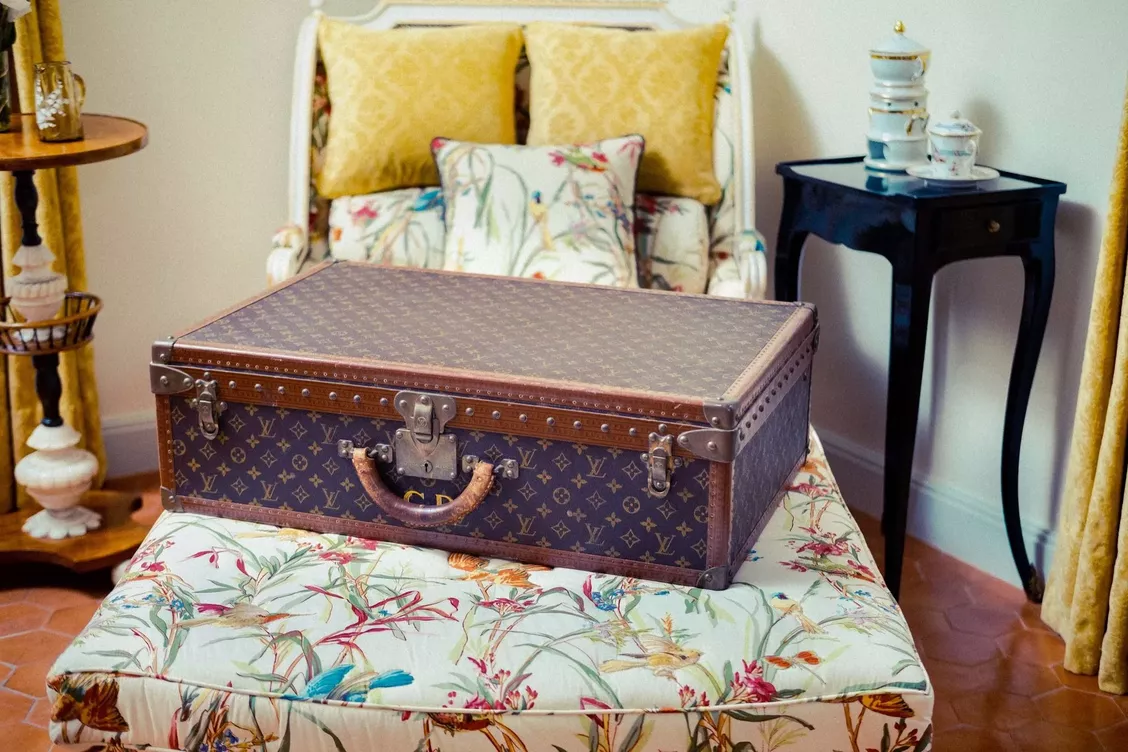
A phobic flyer, Dior traveled between Paris and Provence by train, taking the Paris-Lyon-Méditerranée line. His driver would wait for him at the station, ready to take him to the Château with his Vuitton trunk bearing his initials, which can still be seen today in his bedroom.
In his book, Dior wrote: “It is located in Montauroux, near Callian, where a lucky star allowed me, fifteen years ago, to find peace and prepare for a new life. I can’t say much about this house, as I am still building it. It is simple, solid, and noble, and its serenity suits the period of life that I will have to face in a few years. I would like this house to be my real home. The place where, if God grants me a long life, I can retire. The place where, if I can afford it, I can come full circle and find, in a different climate, the enclosed garden that protected my childhood. The place where I can finally live in peace, forgetting Christian Dior and simply becoming Christian again. It is in Montauroux that I am writing these last lines.”
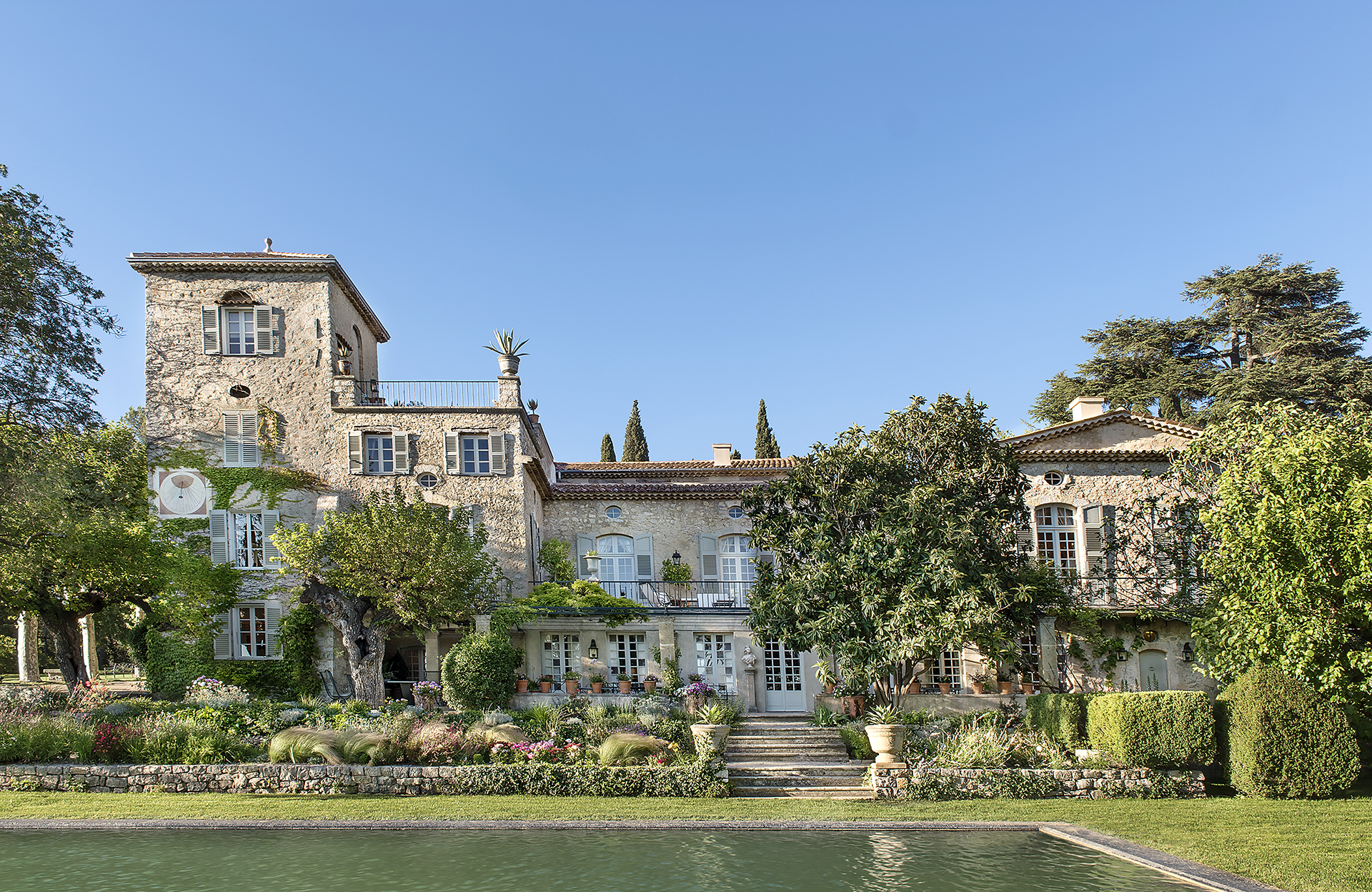
The designer had the ”miroir d’eau” built, a 45-meter-long pool that he designed himself, reflecting the south facade of the château and adding a poetic touch to the estate. This place, where the staff’s children came to swim, embodied the warm and friendly atmosphere that Dior wanted to infuse into his home.
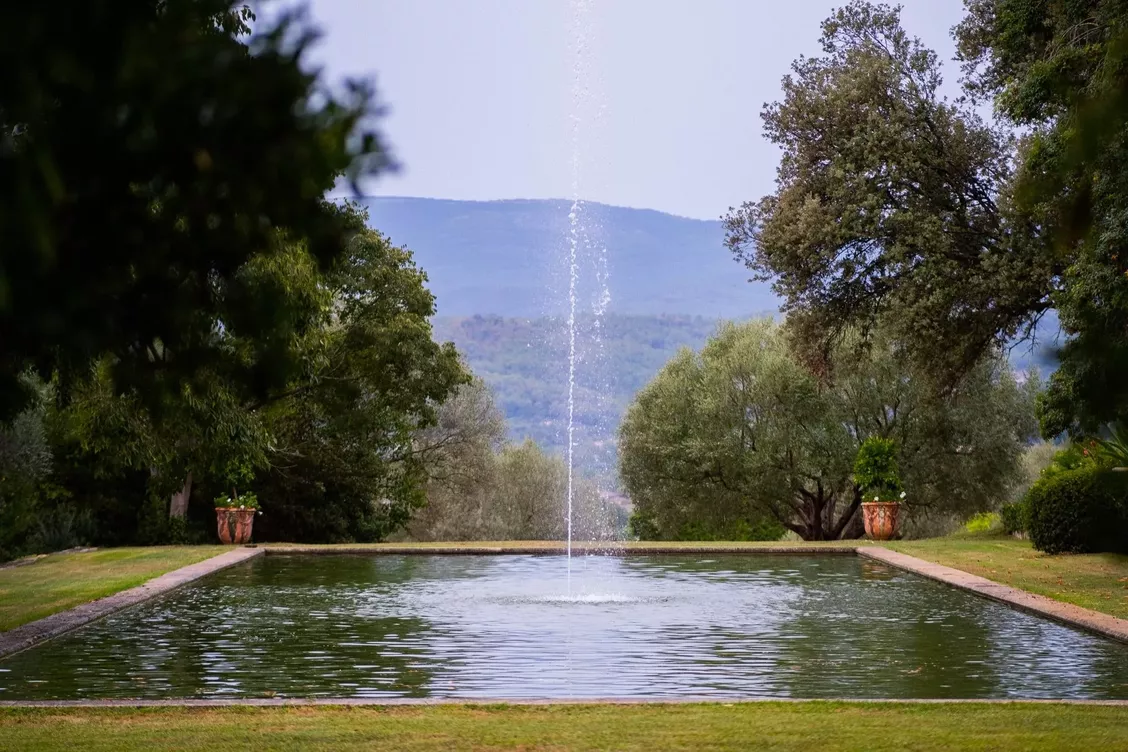
The interior of the Château reflects Dior’s eclectic taste, combining 18th-century furniture, Louis XV and Louis XVI styles purchased from antique dealers, and English touches such as Colefax & Fowler fabrics in the summer lounge. Each room has been carefully designed, from the large salons to the guest bedrooms.
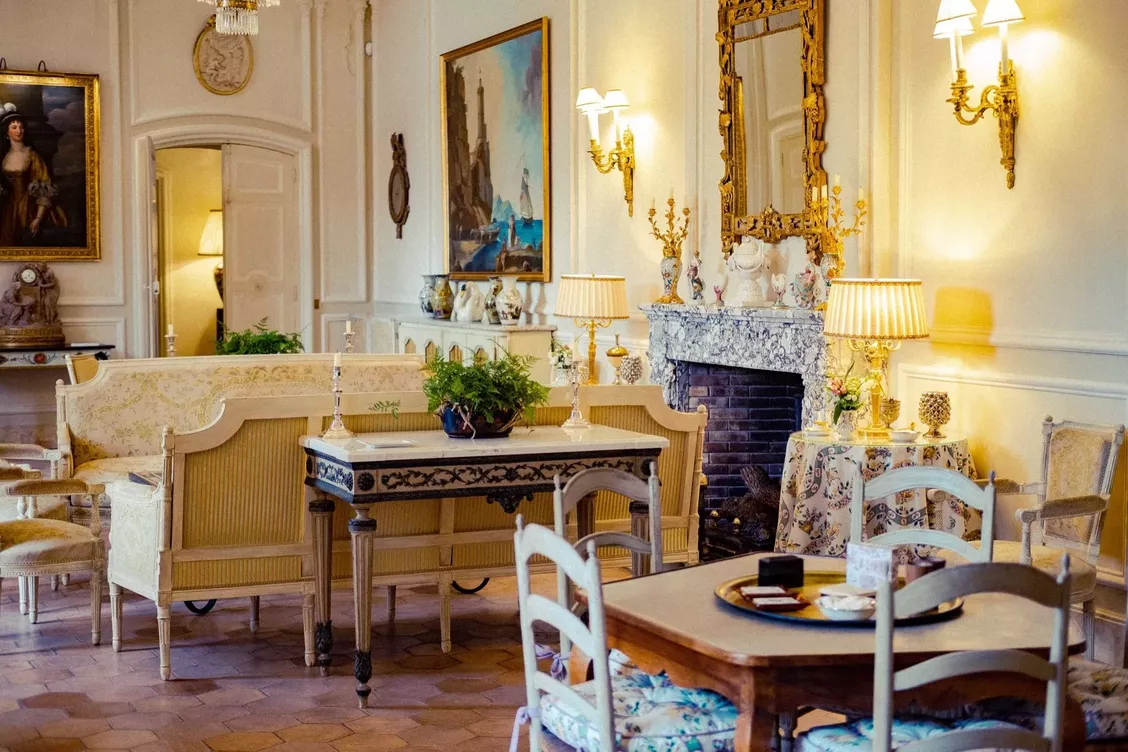
A fragrant and poetic house and garden
The Château de La Colle Noire is not just an estate: it is a sensory paradise, an ode to flowers, the earth, and fragrances. Dior replanted May roses, Grasse jasmine, lavender, olive trees, and almond trees; the paths are lined with cypress trees and rare plants. There is also a vegetable garden, vineyards and fruit trees. The house is literally perfumed: every path is fragrant, every room exudes the South. It is easy to understand why Dior saw the garden as a creative workshop.
Provence inspired Christian Dior to create Miss Dior in 1947. He said: “And then Miss Dior was born. She was born from those evenings in Provence filled with fireflies, where green jasmine counterpoints the melody of the night and the earth.” It was the lily of the valley in La Colle Noire that inspired Diorissimo, created in 1956 by Edmond Roudnitska.
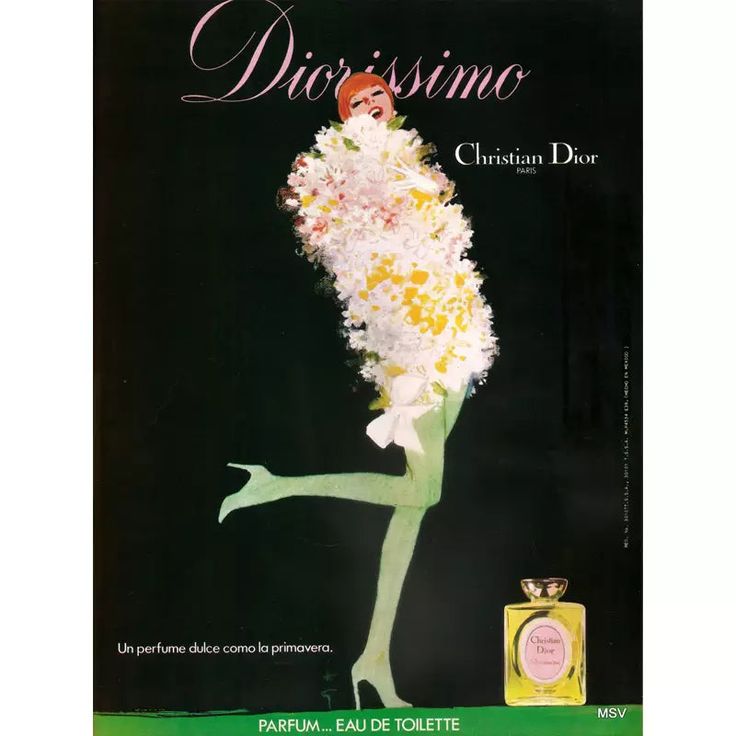
It is in this tradition that François Demachy, perfumer-creator for Parfums Christian Dior, drew his inspiration in 2016 to create La Colle Noire. At the heart of this fragrance is the May Centifolia rose, grown in the estate’s park in homage to Dior and carefully picked before noon to preserve its delicate fragrance.
A place of life, friendship and celebration
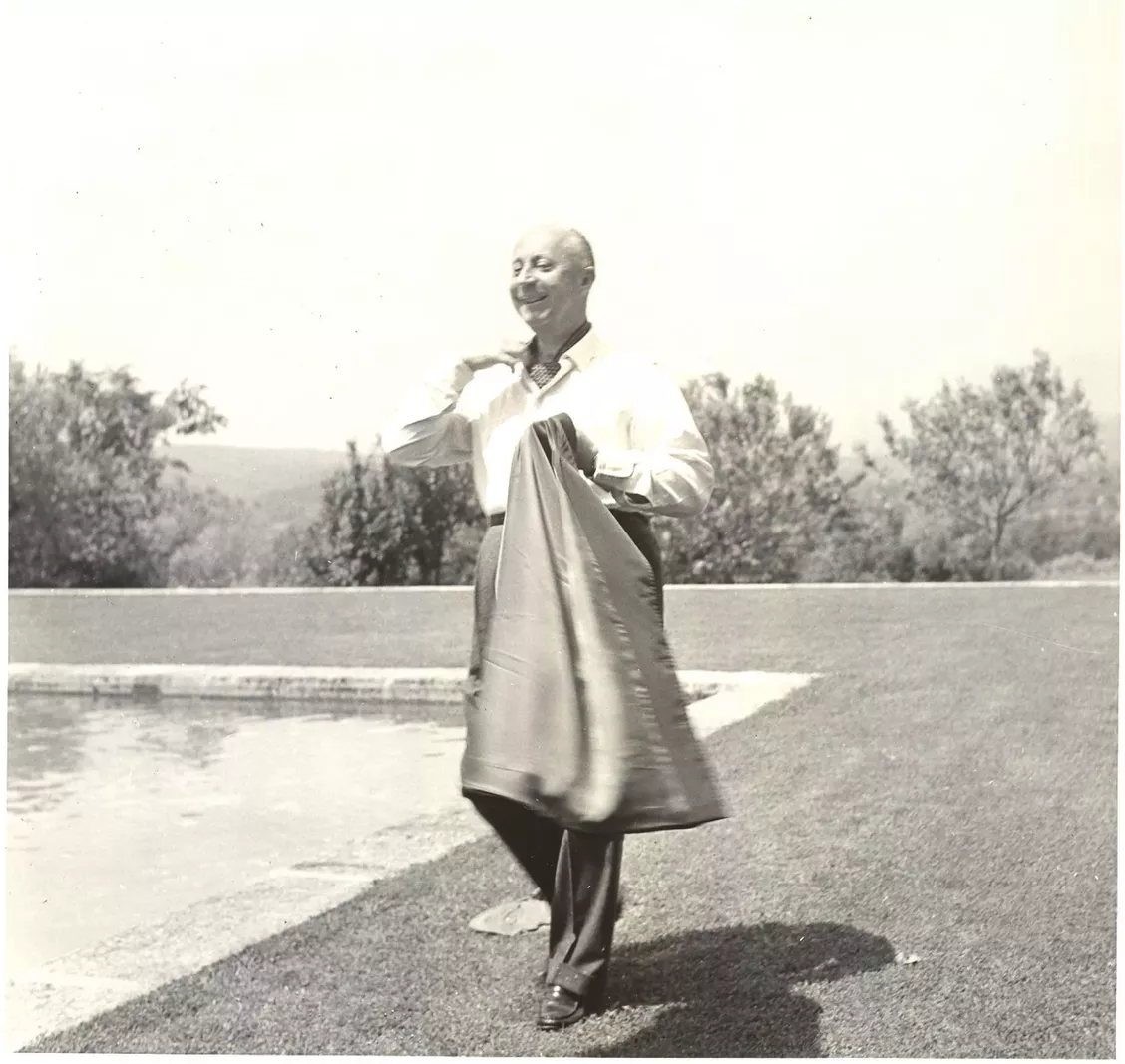
Contrary to the image of a solitary refuge, La Colle Noire is also a welcoming place. The path leading to the Château is so well hidden that Dior himself drew the access route by hand on the back of the invitation cards. Dior welcomed his friends—writers, artists, musicians—in a warm atmosphere. Among them were Colette, Marc Chagall, Jean Cocteau, Bernard Buffet, Raymonde Zehnacker, Mitzah Bricard, his muse and confidante, Marie-Laure de Noailles, photographer Robert Piguet, businessman Pierre Bergé, and Raymonde Zehnacker, his close and loyal collaborator.
Every summer, meals would continue under the pergola and evenings would stretch out around a game of canasta. Architect Svétchine would later say: “It was a way of life that Christian Dior wanted to invent at La Colle Noire. ”
Attached to tradition, Dior attended Mass on Saint Bartholomew’s Day, donated to the parish, and mingled with the residents of Montauroux.
On August 8, 1956, he opened the guest book of the Château, whose signatures and drawings recall his beautiful friendships and also testify to the cultural aura of the place.
A creative workshop in Provence
Beyond parties and relaxation, La Colle Noire was also a workshop. Dior worked there, cutting, drawing, and imagining his future collections. The light, the colors, the scents—everything inspired him. “This retreat allows me to focus on the very essence of my art, in complete freedom,” he said.
It was in this Provençal setting that the famous Robe Bouquet was created in 1952, with its vibrant floral motifs inspired by the Château’s gardens. The surrounding nature is reflected in the prints, cuts and textures. Provence became the designer’s silent muse.
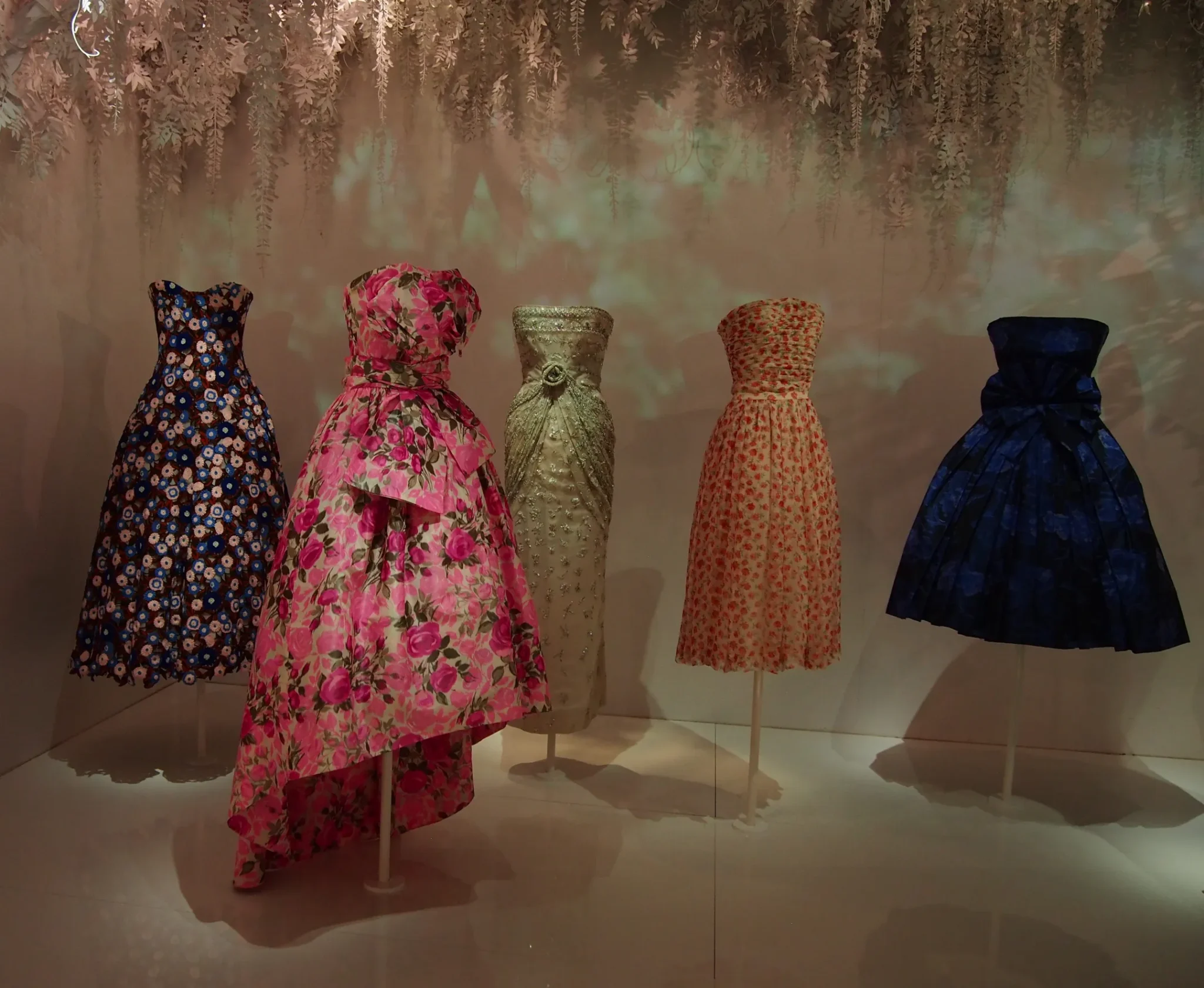
A renaissance by Dior Parfums
At the end of October 1957, the villagers working in the vineyards received the terrible news: “Monsieur will not be back for the end of the harvest.” While on vacation in Italy, the couturier had suffered a heart attack. Catherine moved into the house for a while before selling it two years later, in 1959. The furniture and trinkets were auctioned off.
Dior’s dream vanished. La Colle Noire was left abandoned until 1976, when it was bought by a family of industrialists from the north of France, who turned it into their vacation home, then a luxurious summer rental for weddings and baptisms. From April to August 1999, the English band Oasis recorded part of their fourth album, Standing on the Shoulder of Giants, there.
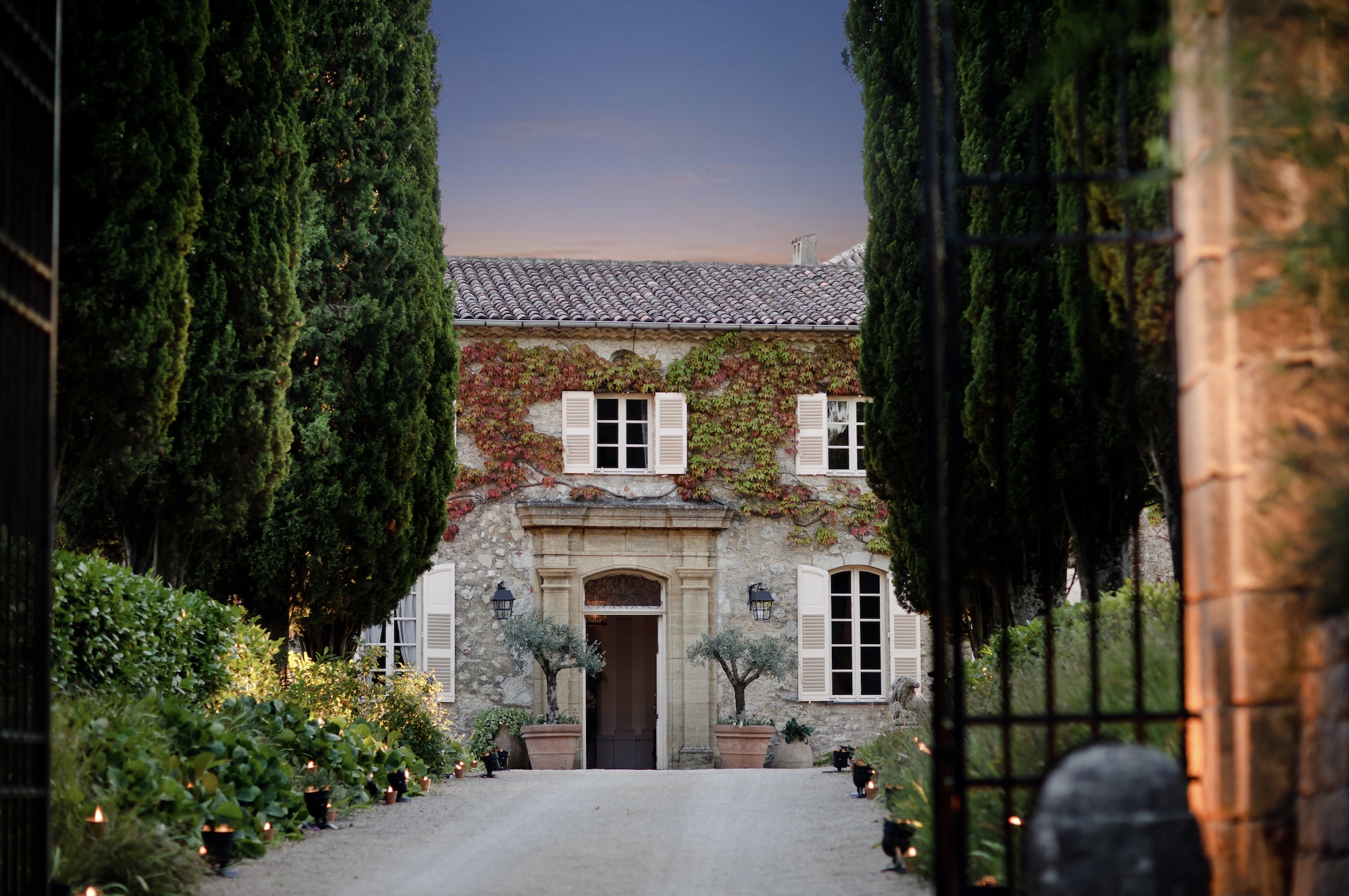
In 2013, Parfums Christian Dior bought the estate, which had fallen into disrepair, and began a meticulous restoration, faithful to the spirit of the master. The gardens, pond, and interior were all redesigned based on the archives. The château regained its soul, and La Colle Noire was inaugurated on May 9, 2016, in the presence of Charlize Theron, returning to its original purpose of welcoming “friends of the house.”
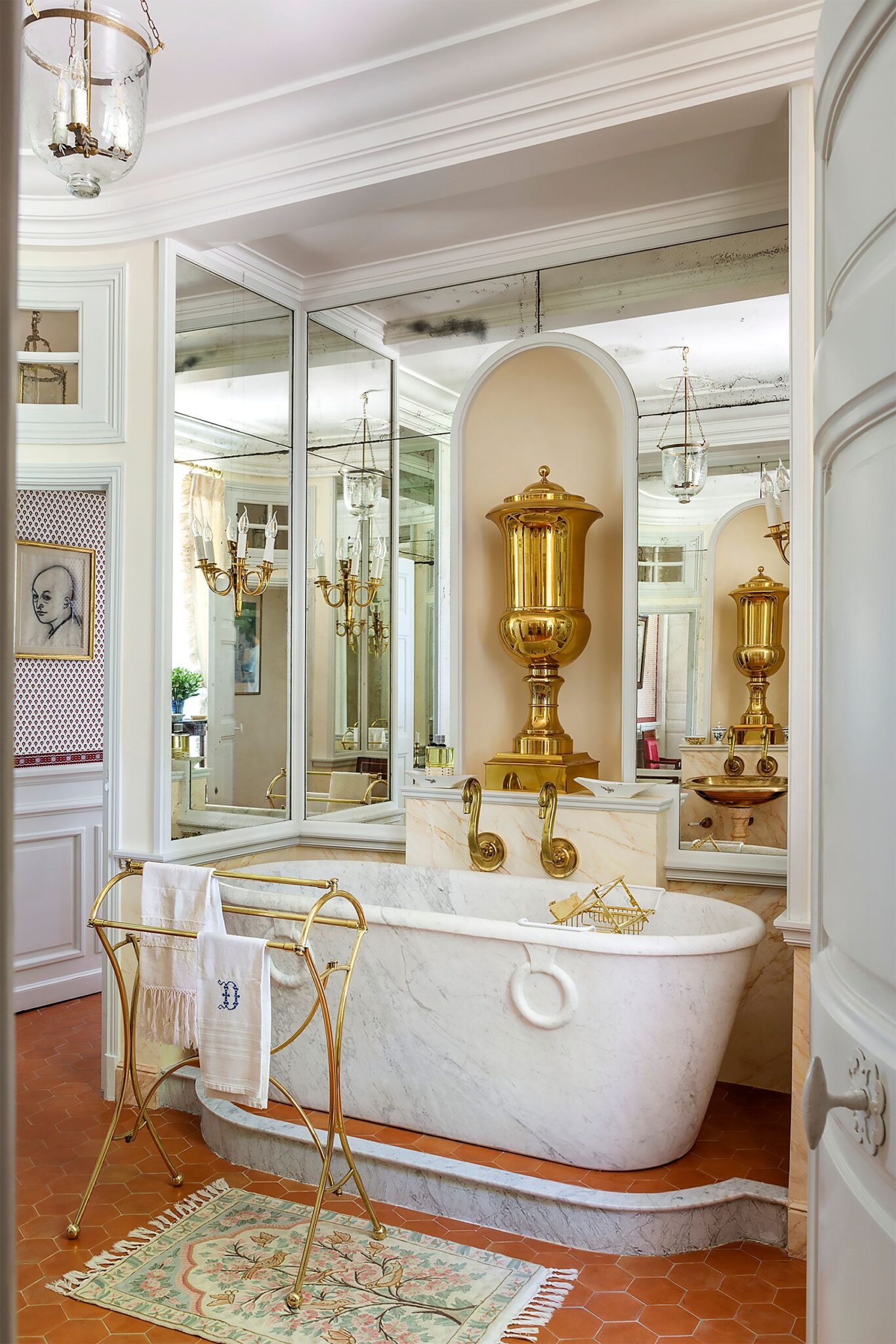
Today, the Château continues to convey the spirit of Christian Dior with private events, temporary exhibitions, exclusive fashion shows, banquets, and celebrations such as the gala dinner organized in 2022 with Anya Taylor-Joy. In May 2025, Maria Grazia Chiuri and Victoire de Castellane will present the Diorexquis high jewelry collection there, renewing the link between the past and creation.
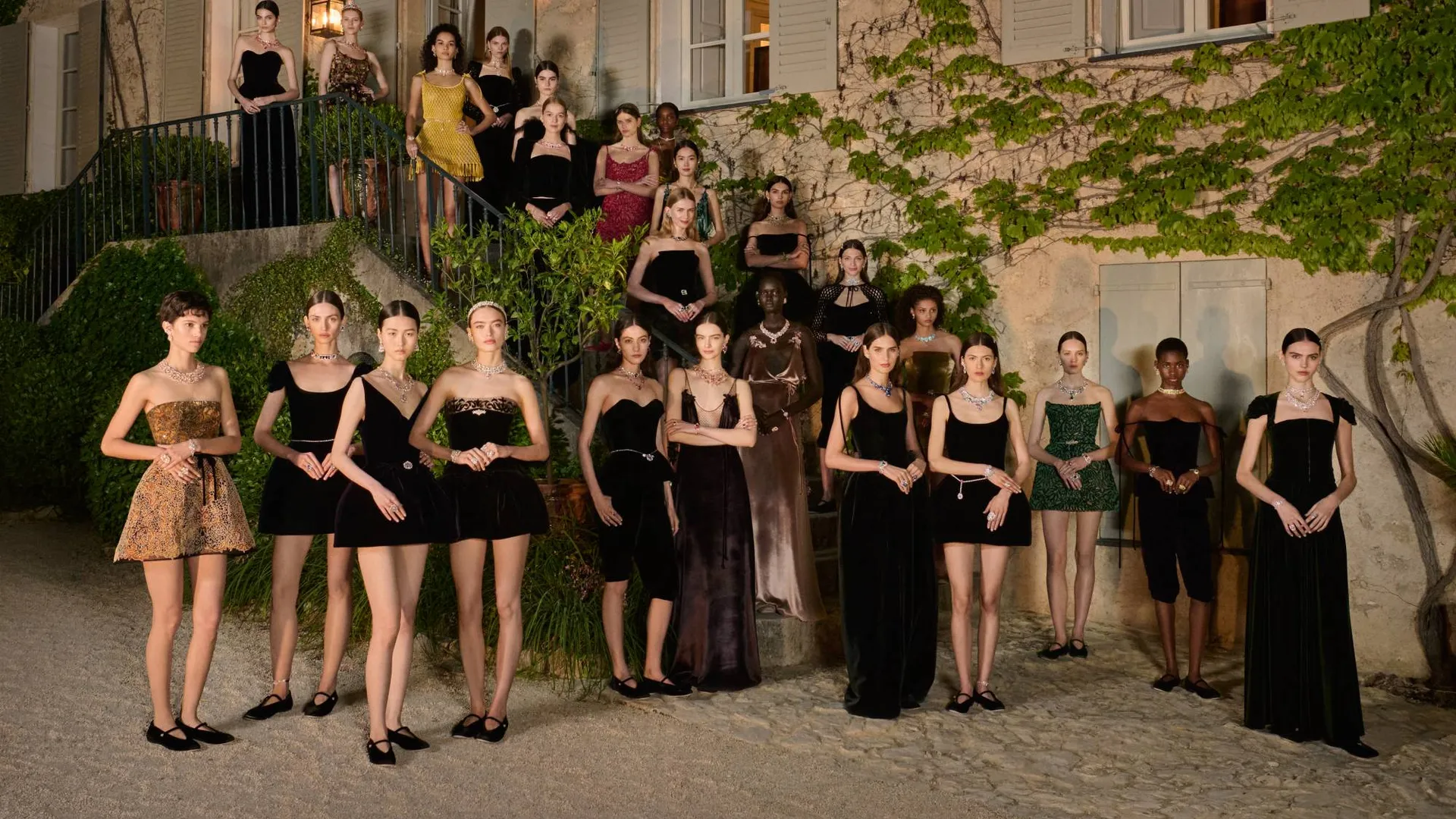
La Colle Noire is not just a place, it is a vision, a vibrant testimony to the Dior heritage. Christian Dior projected his dreams, his memories and his art de vivre there. Closed to the public but vibrant with history, the estate remains a testament to a quest: that of a balance between silence, fragrance and elegance. It continues to inspire designers and perfumers, like a well-kept secret in the heart of Provence.
“I think of this house as my real home… the place where I can come full circle.” said Christian Dior. A wish that, seventy years later, still blossoms in every rose-lined alleyway.
Read: Christian Dior and the South, the Château de la Colle Noire – Laurence Benaim, Rizzoli, 2017
The Château de La Colle Noire, a way of life in Provence – Guillaume Garcia-Moreau, 2018
Christian Dior and Me by Christian Dior – Librairie Vuibert, 2011
Next episode: Paul Poiret and the Villa Poiret in Mézy-sur-Seine
Read also > SUMMER SAGA: Designers’ retreats – Episode 4/9: Gabrielle Chanel and La Pausa | Luxus Magazine
Featured image: montage of Christian Dior’s portrait and the Château de la Colle Noire © Collection Dior Parfums, Paris




